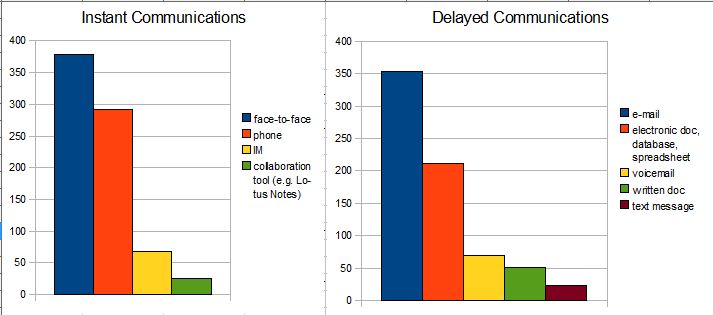The Harvard Business Review (HBR) recently had an article by Professors Tsedal Neeley and Paul Leonardi titled “Effective Managers Say the Same Thing Twice (Or More).” We put this principle into action all the time in our personal lives, like repeatedly telling your child to look both ways before crossing the street, or sending out e-mail reminders to make sure people come to your Christmas party.
Authority Is Not Automatic
Likewise, a good manager regularly puts this principle to good use at work, but it’s funny how a little power can affect things. Neeley and Leonardi noticed that oftentimes managers with direct authority assume that just because they are in charge, people will automatically do what they’re told. The truth is work culture and structures aren’t so simple anymore: the top-down system is out, and a flatter, more egalitarian team-based structure is in. Authority is more dispersed and fluid, teams are constantly forming and disbanding, and people might be a part of several project teams at the same time. Furthermore, we live in an information age where people’s lives are fragmented and too many activities and distractions vie for our attention making it just plain hard to keep straight everything we need to do.
In the same issue of HBR, productivity guru David Allen emphasizes the importance of writing down or capturing our to-do’s somewhere where we’ll see it, otherwise they’re likely to disappear into Never-Neverland because, as he explains, the human brain simply isn’t designed to hold thoughts, so all those good intentions that never get captured or objectified simply end up being fodder for 3 a.m. guilt trips.
Presence Over Clarity?
In such an environment, Professor Leonardi says that good communication is no longer just about getting a clear message across but about making a big enough splash to get your message noticed or rather the ability to keep splashing in a way that people stay tuned to your message. He further suggests that utilizing the various media available to us may be the key to maintaining priority in someone’s mind. Even more interesting is how managers can utilize different medias to make themselves heard above the noise. For instance, Leonardi and Neeley found that it was much more effective when managers first used instant communication (like face-to-face, phone, videoconference) which is better for getting people on board and then immediately followed up with a delayed communication (e-mail, electronic document, memo) which documents or captures the original goals. Less effective managers tended to do the opposite: They would first send a delayed communication (assuming that their alleged authority would give weight to the request),which would often have to be followed up by a panicked instant communication when a lack of responsiveness has led to a minor fire.
Tools Of The Trade
Leonardi and Neeley’s study also found that the most popular modes of communication are face-to-face, e-mail, and phone with face-to-face and e-mail comprising nearly 50% of all observed communications. At the bottom of the list was “Collaborative technologies” (e.g. Lotus Notes, BMC Dashboard) used for approximately 2% of communications, only slightly more than cell phone text messages. Apparently videoconferencing and webconferencing didn’t even make the list, which makes sense in cases where face-to-face is available. However, with geographic dispersion becoming a fact of everyday work life and the imperative of making one’s presence more strongly felt in coworkers’ daily lives, perhaps it’s time to give videoconferencing a try.
*Chart figures from: Paul Leonardi, Tsedal Neeley, and Elizabeth M. Gerber (in press). How managers use multiple media: Discrepant events, power, and timing in redundant communication. Organization Science.
Follow us on Twitter (@VSee) and Like us on Facebook to hear about the latest from VSee! By the way, we are hiring too.




